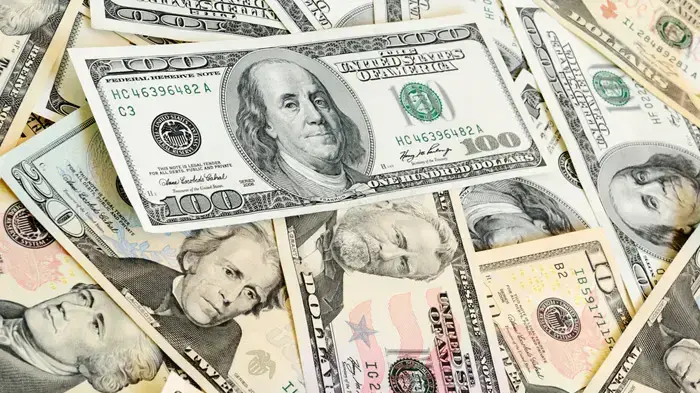Economic Corona: Inflation or Hysteria?
Are you afraid of settling for high inflation that will lead to a slowdown and unemployment?
It can be encouraged: the release of traffic jams at seaports, along with increased chips from chipmakers, will alleviate the high price pressures.
John Mayer, Senior Investment Manager at Global X: "These are issues that will improve throughout the year"
Roast Greenberg
26/12/2021
Sunday, 26 December 2021, 17:35 Updated: Monday, 27 December 2021, 09:12
Share on Facebook
Share on WhatsApp
Share on Twitter
Share on Email
Share on general
Comments
Comments
Recently, we have been faced with a new-old threat, inflation (rising prices that lower the value of money) - one of the side effects of the 'After Corona'.
Summary of previous episodes: In the early days of the plague the world closed, shipping was stopped, and production outputs declined. But vaccines have brought the world back to normal - and with it the demand; For workers, goods, and the need for the arrival of these two places of production.
Because demand exceeds supply capacity - prices rise and lead to inflation. Thus, alongside the world's confrontation with the corona virus and its contaminants, which refuse to violate their grip on the global agenda - and continue to interfere with normal economic activity, governments are beginning to fear a downgrade of their currency.
This is a process that could lead not only to a worsening of the economic situation but also, as a result, to social instability, as inflation is like a rise in prices: our salaries are simply less equal wherever we turn (and some call it the "tax on the poor").
Fear of inflation has colored economic forecasts in gloomy tones, but there are also those who find reasons for optimism in examining the sources of inflation, and estimate that the demon is only an elf, and its time is limited.
A review written by
senior investment manager John Meyer, of the global ETF firm Global X
, said that most of the inflationary pressures were due to the huge bottlenecks in seaports that delayed the arrival of goods for months, along with non-compliance with chip market demand and rising wages.
The technology - in the shoe
The natural solution to knee pain is closer than ever - with a refund from the health insurance fund
Served on behalf of Apostrophe Therapy
The barriers are starting to loosen
"The main question when it comes to inflation is whether it is temporary or permanent," writes Mayer, "and it seems that most of the inflationary pressures caused by problems in the supply chain. This is a temporary factor, and perhaps we are already seeing signs of improvement. In October and November, for example, have already seen prices drop shipments chemicals.
Even Los Angeles and Long Beach merchant ship traffic jams are beginning to loosen, and with them the shortage of chips, which affects the delivery times of many products such as cars and household appliances, is expected to improve in the second half of the year as chipmakers' efforts increase production the American government to increase domestic production capability.
On the other hand, it is true that there are also inflationary pressures more constant, such as wage inflation and the rising cost of renting. however, we believe that inflation will remain high in the first half of the year and level off as bottlenecks in the supply chain will begin to be released .
The two graphs prepared in Global X illustrate the signs that may indicate the onset of bottleneck relief in the global supply chain.
The "Baltic Dry" graph (as published by "Global X"), influences global shipping pricing.
Consistent rise ending in sharp declines starting in October 2021 (Photo: None)
Decrease in sea freight rates
The first chart, which relies on Bloomberg data as of December 20 this year, is of the Baltic Dry Index, which is a world-accepted benchmark for pricing sea shipments, and can be seen as a consistent rise in price since July 2020, along with a sharp decline since last October.
The container ships awaiting unloading in Los Angeles, the largest seaport in the United States. Is the cork released? (Photo: None)
Fewer ships stuck in ports
The second chart is the number of the ships waiting to dock or (nonsense as far as 40 miles) away from Los Angeles, which is the largest US port for unloading containers and non member of unpacked.
Graph data based Marine Exchange of Southern California, the body that promotes the maritime trade in the Los Angeles area, the right to 17 December 2021. Again, after bottlenecks in the port only got worse, cork can be seen the release of recently.
for example, on November 16, the number of containers waiting to be unloaded on the record of 86, And according to the most up-to-date figure the number has dropped to 23.
Goods in the heart of the sea.
The number of ships waiting outside the ports is declining (Photo: Reuters)
Inflation in the US, a consequence of temporary factors
"Inflation in the US is now due to more 'fixed' factors such as economic growth and wage increases," Mayer explains, "and 'temporary' factors such as price increases resulting from supply chain problems, shipping prices and component shortages. In our view, the problems in the supply chain have been one of the 'temporary' factors for inflation, and as the situation in these aspects improves, the resulting inflationary pressures will weaken.
At present, in our opinion, there is no basis for fear of stagnation (a high inflation rate in which economic growth slows and the unemployment rate remains high), but on the other hand, the omicron variant may continue to cloud the market in the near term.
At the economic level, if the spread of the variant leads to restrictions on the economy, it may, on the one hand, moderate the price pressures resulting from high demand, but burden the supply chain problems. "
When will the US Federal Reserve stop quantitative easing, that is, flooding the market with "cheap" money? (Photo: ShutterStock)
Stopping the rise in prices without hurting growth
And where does this put an end to the quantitative easing announced by the US Federal Reserve?
" Corona plague, and when the Federal Reserve will finally complete the quantitative easing and move to interest rate hikes.
On the one hand, in light of inflation data, the bank needs to act quickly if it wants to moderate the rise in prices, but on the other hand, be careful not to act in a way that will hurt fragile growth. The Federal Reserve began reducing quantitative easing in November to $ 120 billion a month.
Initially, the bank reduced the volume of purchases by $ 15 billion a month, but in December, at the last policy meeting of the year, it tightened its position and increased the reduction rate to $ 30 billion, and now the quantitative easing is expected to end in March 2022.
According to current estimates, the bank will start raising interest rates when the US economy reaches full employment (4% unemployment rate), which is expected to happen soon. We estimate that the bank will start raising interest rates at the end of the first quarter of 2022. It
should also be remembered that the value in the stock market is very high at the moment. Given the removal of monetary support and more moderate growth forecasts, we are unlikely to see the multipliers expand further. Therefore, investors will return to focus on the companies' fundamental data: profitability and revenue forecasts, and the correlation between these and market value.
In the reporting season for the third quarter, the companies were able to present higher-than-expected profitability, which resulted, among other things, from the roll-over of the price to the consumer. However, there is a limit to how much can be rolled out to the consumer. In the fourth quarter, it is expected that the net profitability rate of companies traded in the S & P500 index will decrease from 12.9% on average to 11.8%.
In an environment of rising interest rates, the investor's tendency is, most often, towards equities from high-purchasing power cyclical sectors, such as companies from the financial, energy, industrial and raw materials sectors.
In addition, the values in these sectors are lower compared to, for example, growth companies. However, keep in mind that we still do not know what the consequences of the Omicron variant will be. If flight restrictions are imposed, the energy sector could be harmed.
And if we focus on the technology world that led the stock market rises in Corona, then companies in information technology (IT) have demonstrated a high ability to roll over the rise in consumer costs, and in addition, are companies that are less affected by bottlenecks in the supply chain. However, in this sector the values at which they are traded are very high.
"Conditions in the market now for the 'Buzz' shares that starred in 2020-21, or as they are better known - the 'growth shares', are less positive, in light of the inflated values of those companies, some of which have not yet reached a profitability level."
John Mayer, Senior Investment Manager at Global X. A different and encouraging forecast regarding inflation (Photo: Global X)
The omicron may slow down the rate of improvement
Meyer concludes: "We estimate that the market will be more selective and will prefer companies that present high profitability and a clearer expectation of revenue. Among the sectors that benefit from the current environment: finance, energy, raw materials, and industry. In the technology sector supply and prices of raw materials.
pandemic proved that the market can cope with challenging times, as long as these problems and challenges that the market believes they are transient. this is an important insight examining the impact of the supply chain and energy prices, we believe these problems sew throughout the year, although the variant omicron may delay the These processes. "
It should be mentioned that Meyer's voice is unusual among his colleagues who warn of inflation, but unusual as it may be, it is possible that he is not drawn to unnecessary funk and prefers to rely on facts that may well turn the fear of inflationary spin into false concern.
Global X ETF was founded in 2008 by Asian investment house Mirae Asset, and manages about $ 40 billion in about 80 different ETFs, which track sectors and sub-sectors in different countries, specializing in Thematic ETFs.
Of money
Tags
inflation
transport
Los Angeles
Containers
Corona












